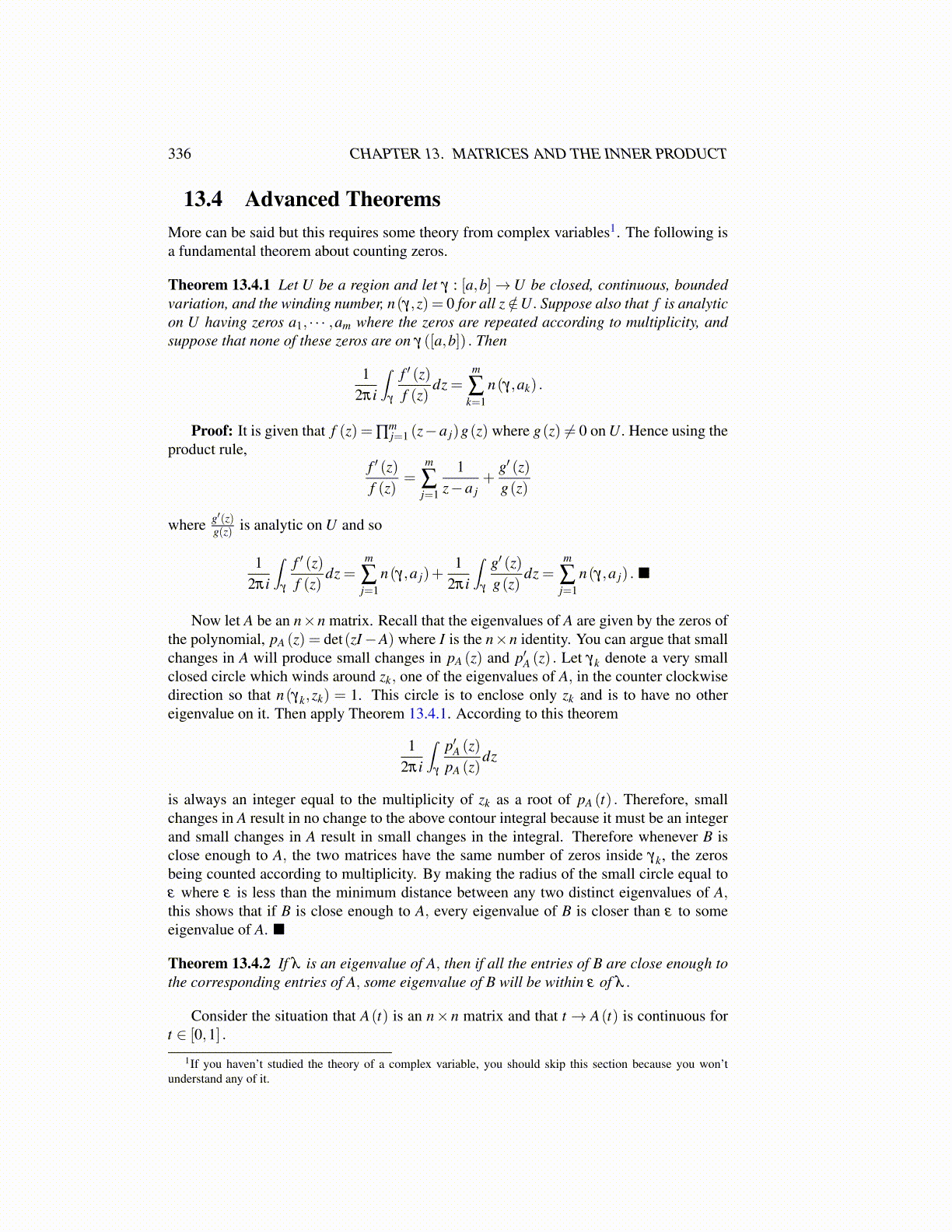
336 CHAPTER 13. MATRICES AND THE INNER PRODUCT
13.4 Advanced TheoremsMore can be said but this requires some theory from complex variables1. The following isa fundamental theorem about counting zeros.
Theorem 13.4.1 Let U be a region and let γ : [a,b]→U be closed, continuous, boundedvariation, and the winding number, n(γ,z) = 0 for all z /∈U. Suppose also that f is analyticon U having zeros a1, · · · ,am where the zeros are repeated according to multiplicity, andsuppose that none of these zeros are on γ ([a,b]) . Then
12πi
∫γ
f ′ (z)f (z)
dz =m
∑k=1
n(γ,ak) .
Proof: It is given that f (z) = ∏mj=1 (z−a j)g(z) where g(z) ̸= 0 on U. Hence using the
product rule,f ′ (z)f (z)
=m
∑j=1
1z−a j
+g′ (z)g(z)
where g′(z)g(z) is analytic on U and so
12πi
∫γ
f ′ (z)f (z)
dz =m
∑j=1
n(γ,a j)+1
2πi
∫γ
g′ (z)g(z)
dz =m
∑j=1
n(γ,a j) . ■
Now let A be an n×n matrix. Recall that the eigenvalues of A are given by the zeros ofthe polynomial, pA (z) = det(zI−A) where I is the n×n identity. You can argue that smallchanges in A will produce small changes in pA (z) and p′A (z) . Let γk denote a very smallclosed circle which winds around zk, one of the eigenvalues of A, in the counter clockwisedirection so that n(γk,zk) = 1. This circle is to enclose only zk and is to have no othereigenvalue on it. Then apply Theorem 13.4.1. According to this theorem
12πi
∫γ
p′A (z)pA (z)
dz
is always an integer equal to the multiplicity of zk as a root of pA (t) . Therefore, smallchanges in A result in no change to the above contour integral because it must be an integerand small changes in A result in small changes in the integral. Therefore whenever B isclose enough to A, the two matrices have the same number of zeros inside γk, the zerosbeing counted according to multiplicity. By making the radius of the small circle equal toε where ε is less than the minimum distance between any two distinct eigenvalues of A,this shows that if B is close enough to A, every eigenvalue of B is closer than ε to someeigenvalue of A. ■
Theorem 13.4.2 If λ is an eigenvalue of A, then if all the entries of B are close enough tothe corresponding entries of A, some eigenvalue of B will be within ε of λ .
Consider the situation that A(t) is an n× n matrix and that t → A(t) is continuous fort ∈ [0,1] .
1If you haven’t studied the theory of a complex variable, you should skip this section because you won’tunderstand any of it.